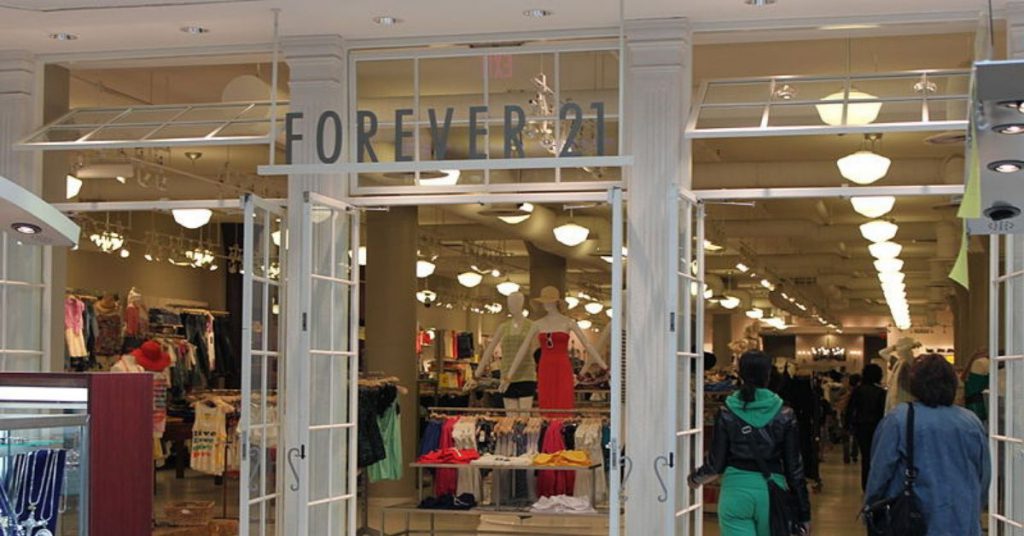Forever 21 is a clothing brand that seems to be in every mall, but it’s not one that stands out the way Uniqlo or H&M does. I don’t know about you, but every time I pass a Forever 21 store (especially the one in Sunway Pyramid), I’m never drawn towards crossing its threshold.
The only time I and my friends would venture in is when they’re having some major sales to sell off old stock, but even then we often leave empty-handed. So, news of its alleged filing for bankruptcy didn’t surprise me one bit.
This wasn’t something that happened overnight; the brand’s been experiencing falling sales and rising debt for a while now, reporting US$40mil in losses back in January 2018. When it comes to potential reasons why this might be happening to them, there are some immediate thoughts that come to mind. Here’s what I think has contributed to their drop in sales:
1. Their Clothes Are Simply Outdated
In my personal opinion (based on what I’ve seen in person and online), Forever 21’s clothes simply aren’t of the style millennials and Gen Z go for anymore. The popular styles that we of the younger generation go for nowadays are either streetwear or elegant monochrome outfits, and Forever 21 just doesn’t do either very well.
Like the Peter Pan of fast fashion, they didn’t seem to grow to cater to the demands and interests of their target demographic. I dare you to enter one of their stores and not come across at least a few pieces of clothing that bring the word “tacky” to mind.
2. Inconsistency And Lack Of Quality Control
Like many other clothing retailers, Forever 21 doesn’t manufacture its own clothing, outsourcing them from other various manufacturers instead. This often results in inconsistent sizing across their tops and bottoms despite them all having labels that say they’re the of the same size. This leads to consumer frustrations over not being able to fit certain outfits they like, or ending up annoyed by how two M-sized pieces don’t even fit the same.
3. Overlooking The Power Of Influencer Marketing
As much as people criticise influencers (think Instagram models specifically), you can’t deny that these individuals have some major selling power. Just look at how large online clothing brands like Fashion Nova and Pretty Little Thing have grown in the US just by sponsoring influencers on Instagram and Youtube.
Forever 21 hasn’t been very reliant on influencer marketing, and I think that’s where they missed out on a low-cost form of advertisement that has been proven to work. In the midst of other e-commerce fashion brands aggressively promoting their stuff on every platform we use, Forever 21 has made it easy to forget them.
4. Growing Awareness On The Detriments Of Fast Fashion
We’ve all heard the arguments against fast fashion and seen the news about the horrible working conditions people in third world countries are put through and the lousy pay they get in return for their work in sweatshops to produce clothing for brands like H&M and Forever 21.
More and more people are now boycotting fast fashion and settling for brands that call themselves “sustainable” or have proven that their apparel is produced ethically. While often pricier, consumers are willing to pay the price and comfort themselves with the justification that they’re at least not contributing to unethical working practices. Another thing that might have contributed to a decrease in sales is…
5. The Rising Popularity Of Thrift Shopping
I can’t say for sure that thrift shopping has really kicked off in the ASEAN region yet, as even in Malaysia we struggle with finding thrift stores that actually have a decent collection of apparel. In the West, however, thrift shopping is rising swiftly in popularity, with YouTubers showing off their thrifted hauls proudly.
Furthermore, the brands they find at thrift stores aren’t unknown ones, they’re often expensive, maybe even luxury brands that are being sold at amazingly low prices. So, it’s just inconceivable that one would buy one article of clothing from a retail brand when you could get several quality thrift pieces for the same price.
-//-
As Forever 21 is filing for Chapter 11 bankruptcy, it doesn’t mean that the brand will immediately halt all business and die off. Chapter 11 allows a company to continue operating while it comes up with a plan to restructure, reorganise or rebrand itself. If they’re able to come up with a plan, consult with an experienced law firm like Kania Law and execute the plan, they could potentially come to a compromise with or eliminate certain classes of debt.
Essentially, it’s a reset button for the company that gives it time to try and get back on its feet. If Forever 21 fails to come up with a plan, they’ll have to liquidise some or all of their assets and shut their doors for good.
For now, we might see some of their underperforming stores close down, but the brand will still be around. What is now a potentially worrying outcome is the ripple effect Forever 21’s bankruptcy will have on its workers all across the globe.
Featured Image Credit: Dwight Burdette on Wikimedia
